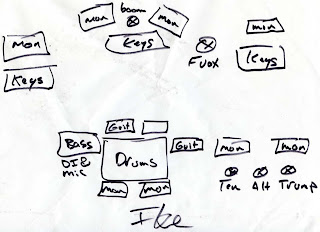So what are those forces, well they are:
CATS!
Mr Joel Veitch in his paper "The Internet is made of Cats"*** got it half right. He, correctly, theorised that the internet is not only made of and by said Cats but that it was also a positive influence on the world creating all the nice things that you find on the Internet. This is evidentially true to anyone who has spent any length of time on t'interwebs or indeed opened an email during the 90's. What Mr Veitch failed to mention is the opposite force acting upon the Cats at all time. Naturally this is...
HATING STUFF!
Hating stuff**** occurs naturally throughout the Internet in many forms. In blogs such as these, forums comments, social networking sites and at the Daily Mail's website. Now some of this is quite justified, I can heartily recommend www.redlettermedia.com for some simply fantastic hate filled criticisms of modern cinema and quite often the internet can be the voice of common sense pointing out and lampooning the ass-hatery of individuals and companies world wide. Lots of it is just hating stuff however. And there has been a lot of hating stuff recently.
Last week iTunes released it's 10th iteration and shock horror it changed it's logo! This has caused uproar on the internet! Somehow.
 |
| "Classic iTunes" logo |
If there is one thing we human beings hate, it's change but change the world has. Where iTunes has been successful is that it has gone outside of it's area of influence. What I mean by this is that once upon a time in the early days of the internet people who kept music on their computers were viewed with suspicion, fear and generally ignored. They were viewed as Crazy types who have digitised their music destroying it in the process with psychoacoustics (actually that argument is still going on just most people don't care anymore).
Amongst other things what iTunes very cleverly did was put on a CD on it's logo. (It also got locked into DRM by the SDMI but that's another matter entirely and that's not the subject here.) By placing a familiar household object within the logo Apple reached out to people who did not put music on their computers and told them that it was ok to do so. It gently stroked their heads and put a picture of a CD on there to remind them that it's like a CD except that it's spreadsheet that plays music.
 |
| Nasty horrible fake fruit...I mean iTunes 10 Logo |
It's now 12 years since Napster, 8 years since Kazaa, 5 since Limewire. The concept of peer to peer networking is thoroughly embedded within the mindset of todays music listeners. The simple fact of the matter is that the CD is in it's death spasms. The failure of the music industry to recognise the digital revolution is well documented and I am not going to add to it here but in all honesty if you still do not think that the CD is on it's way out ask yourself this:
Name the last 4 cd's you bought and the length of time between the first and last purchase.
There was a time when all of us have gone into HMV and picked up 4-5 albums in one go. Chances are you were some where between 16-24 when you did this. Chances are you've not done it for a while now. Year on year download sales increase and physical format sales decrease and at long last the Music Industry is beginning to recognise that this is not actually a problem, it's just the way of things.
Apple have recognised this, in removing the CD aspect of their logo they are turning away from it's first 10 years of providing a product that integrates with a CD. Whereas I doubt the ability to rip tracks from a physical format onto iTunes will go the message here to me is clear. The first 10 years was about iTunes and the CD being together. Now iTunes is all grown up and moving on to other things, it doesn't need the CD anymore. None of us do.
In short it's not something to hate, not really, if it really bothers you that much just change the icon on your computer it's not hard and there are dozens of tutorials on the internet teaching you how. It's really much more of a cat thing.
In short it's not something to hate, not really, if it really bothers you that much just change the icon on your computer it's not hard and there are dozens of tutorials on the internet teaching you how. It's really much more of a cat thing.
* I did fail though.
**up, down, side, bottom, strange, charm, anti up, anti down, anti side, anti bottom, anti strange & anti charm
*** Basement Cat notwithstanding
**** FFFFFFFFFFFFFFFFFFFFFFFFFFFFFFFFFFFFFUUUUUUUUUUUUUUUUUUUUUUUU



